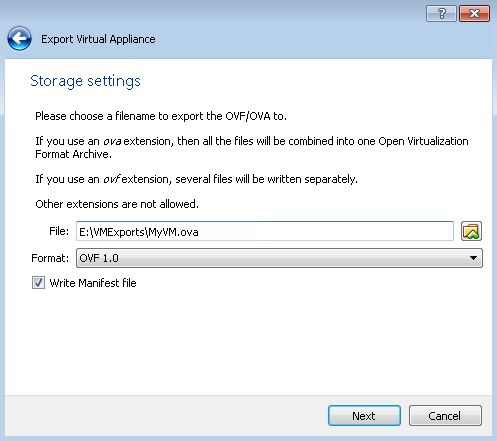


- Export parallels ova how to#
- Export parallels ova install#
- Export parallels ova drivers#
- Export parallels ova mac#
Select UEFI QEMU HARDDISK, the screen should be black for seconds and you should see the GRUB. Select Boot Manager, you should see this window : Here, I type the Escape and F9,F10,F11,F12 keys like crazy. Don't forget to set the VM boot mode to UEFI if your VMs was in UEFI mode.īoot the VM and find a way to enter in the virtual UEFI of the VM. Once the import is done, create a virtual machine using XO or XCP-ng Center, delete the VM disk that has been created and attach your newly created VDI to the VM. Xe vdi-import filename=myvm.vhd format=vhd -progress uuid= Get the UUID of the VDI (on Xen Orchestra or CLI) and use the CLI on the XCP-ng host to import the VHD content into the VDI : Vhd-util check -n myvm.vhd should return myvm.vhd is validįor each VM, create a VDI on Xen Orchestra with the virtual size of your VHD + 1GB (i.e the virtual size of myvm is 21GB, so I create a VDI with a size of 22GB). Use rsync to copy the converted files (VHD) to your XCP-ng host.Īfter the rsync operation, the VHD are not valid for the XAPI, so repair them : Qemu-img convert -O vpc myvm.qcow2 myvm.vhd Use rsync to copy VM files to the "buffer" machine using -sparse flag.Ĭonvert the QCOW2 to VHD using QEMU-IMG : If your VMs are in UEFI mode (OVMF Tianocore) :ĭracut -regenerate-all -f & grub2-mkconfig -o /boot/efi/EFI//grub.cfg
Export parallels ova install#
Install the dracut packages : yum install dracut-config-generic dracut-networkĭracut -add-drivers xen-blkfront -f /boot/initramfs-$(uname -r).img $(uname -r)ĭracut -regenerate-all -f & grub2-mkconfig -o /boot/grub2/grub.cfg Related forum thread: (opens new window)ĭue the fact I have only server here, I have setup a "buffer" machine on my desktop to backup and convert the VM image file. This issue can occur when vhd files was directly copied to storage folder. If You lost ability to extend migrated volume (opening journal failed: -2) You need to move disk to another storage, VM should be ON during moving process.
Export parallels ova drivers#
The fix for this is installing some xen drivers before exporting the VM from VMware:ĭracut -add-drivers "xen-blkfront xen-netfront" -force Importing a VMware Linux VM, you may encounter an error similar to this on boot:ĭracut-initqueue: Warning: /dev/mapper/ol-root does not exist
Export parallels ova mac#
If you have an error telling you that you don't have an default SR, please choose a default SR on your XCP-ng pool (in XO, Home/Storage, hover on the storage you want to put by default, there's an icon for it).Ĭollect info about network cards used in windows VM (ipconfig /all) use same mac address(es) when creating interfaces in xcp-ng this step will help You skip windows activation if system was activated already.
/ova-files-595519813df78cdc29b9d62a.png)
Export parallels ova how to#
We got a dedicated section on how to migrate from Citrix Hypervisor to XCP-ng. We got a dedicated section on how to migrate from XenServer to XCP-ng. You can do so in VM advanced tab in Xen Orchestra. Double check your settings on your original system, and then enable (or not) UEFI on XCP-ng side for the destination VM. OVA import will miss the information if the VM is running BIOS or UEFI mode.


 0 kommentar(er)
0 kommentar(er)
